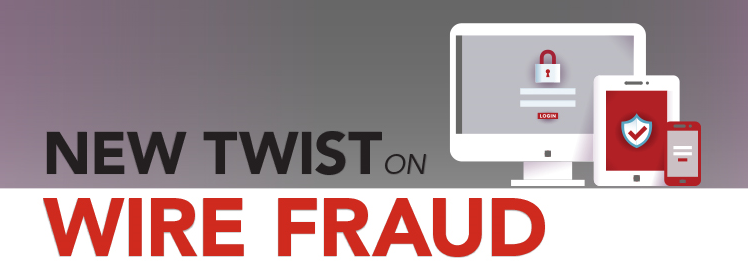Estimated reading time: 3 minutes

There is a scary new twist on wire fraud. Over the past few years, settlement professionals have become targets for fraud. They are responsible for large sums of money which they are responsible for disbursing in the course of closing real estate transactions. Naturally, these schemes to divert funds continue and losses to the parties involved are often devastating.
How the Scheme Works
Here’s how this new twist on wire fraud works. First, the closing professional receives an email that provides disbursement instructions regarding the seller proceeds or loan payoffs. These emails appear to come from a party in the transaction. They are actually from fraudsters who have hacked into the email traffic connected with the transaction. Most settlement professionals now employ call-back procedures to confirm any instructions received via email. Lost funds are the result when mistakes are made.
The New Wire Fraud Twist
Now, the latest twist in wire fraud occurs after a closing professional has already wired funds to a fraudster’s account having relied upon fake wire instructions. The fraudster makes contact with the closing professional. First, they pretend to be the receiving bank for the wired funds, often using a spoofed caller identification. This increases the appearance of legitimacy. Next, the fraudster communicates that the funds were sent to an account flagged as being suspicious. Naturally, the settlement professional is assured that the funds with be returned within a few days. This tricks the closer into not contacting the actual bank to freeze the funds, providing the fraudster enough time to move the funds.
For more information on wire fraud check out our previous blog post titled “What do you know about wire fraud?”
As to the New Wire Fraud Twist
Immediate contact initiated by the settlement professionals needs to be to both the wiring and receiving banks upon any indication that funds have been misdirected. Therefore, never rely on an incoming call to provide confirmation of contact.
What Can We All Do About This Twist On Wire Fraud?
Settlement professionals should always follow strict rules that require verification of all disbursement instructions to protect all parties from this twist on wire fraud.
- Thankfully, most settlement professionals require at the very least outgoing call-back procedures. They utilize a known, safe telephone number to confirm any instruction received via email.
- Incoming telephone calls are not a substitute, due to the known risk of call spoofing.
- Closing professionals should also take care to confirm direct contact with the fund’s recipient where possible. Funds have been lost when a closer relies on a call-back made to counsel for a recipient, but the confirming contact between the recipient and his/her counsel was via compromised email.
- Finally, many settlement professionals now require in person, wet signature disbursement instructions from parties who have given valid identification. This may seem like a step backwards, but it does help in the fight against this twist on wire fraud.
Conclusion: Let’s Fight Wire Fraud Together
Always be careful when wiring funds. At Landmark Abstract we will never change wiring instructions via email. To learn more about wire fraud and other cyber fraud issues that affect our industry be sure to visit the fraud section of our Document Library, or call us at 717-293-9760 to learn more.
Learn More:


Leave a Reply
You must be logged in to post a comment.